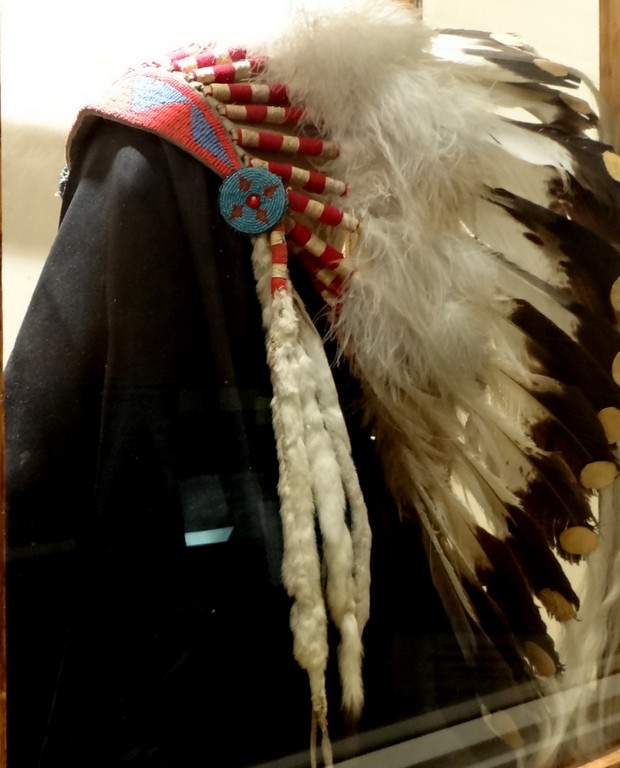
They call Montana Big Sky country, obvious when you drive the treeless plains. The morning we departed Chinook, the sky was beautiful. I wished I could have been out on the open road to see it.

Highway 2 presents you a lot of big sky and golden or green fields between small towns. Shelby is bigger; a major shipping port. We saw stacks of bricks, bags of cement, lumber, other wood products, bags and bags of barley and wheat, big cans of oil. and shrink wrapped piles of unknown products waiting to be loaded into rail cars.

We had an appointment at Brians Automotive Service Station to have another go at fixing the wired connection between the Bronco and the Motor Home. This time, it worked perfectly. Of course, we thought it worked perfectly in Iron Mountain. Jim discovered the battery in the Bronco was not charging but it is now.

It was sunny and warm. Brian's "guard dog" was enjoying the sun along with me.

Our destination, Cut Bank. All of these little towns have silos like these to let you know they are there.

Wheat is king in Cut Bank, though they also grow barley and some flax. This sculpture of wheat sits in front of the visitors center, which was closed.

Cut Bank has another distinction. I thought Fargo, N.Dakota had that distinction. I guess I wouldn't want to be in either place during the winter.

We headed for the Glacier County and Oil Field Museum, set on several acres with farm and oil rig equipment, along with several refurbished homestead era buildings. The outbuildings were closed for some refurbishment, movement of collections, etc.

In the main building, we learn that Lewis and Clark passed nearby as they followed the Maria River on the west edge of town. When we cross the river we will be on the Blackfeet Indian Reservation. It sits at the foot of Glacier National Park. The Elevation is rising and will reach over 5,000 feet as we cross the rockies in the next two days.

A buffalo stomach filled half full of water was used to boil meat and vegetables with heated rocks. Then, the stomach and all was eaten. The Blackfeet used every bit of the buffalo and survived for centuries. After the buffalo were slaughtered, they began to use and depend on trade goods from the white settlers and the old ways were slowly relinquished.

The Blackfeet didn't have chairs, but they made back rests of great beauty. They could sit on the ground and lean against the back rest for comfort and some protection from the cold plains winds.

The museum was well organized for ease of access to its collections. This old radio has the speaker mounted on top.

Maybe the first clock radio.

An item I'd never seen before, or if I had, I didn't know this iron was powered by gas and not steam.

Nor was I familiar with John Clarke's paintings. A Blackfoot who became deaf and mute after suffering from scarlet fever as a child. He learned to paint his people. The curator told us he even has a piece in the White House.
On the curator's recommendation, I went to Naturally Curly for a haircut before we settled in the lot next to the city park for the night. It was delightfully breezy and quiet.
1 comment:
company website Valentino Dolabuy explanation best replica bags Go Here Dolabuy Loewe
Post a Comment